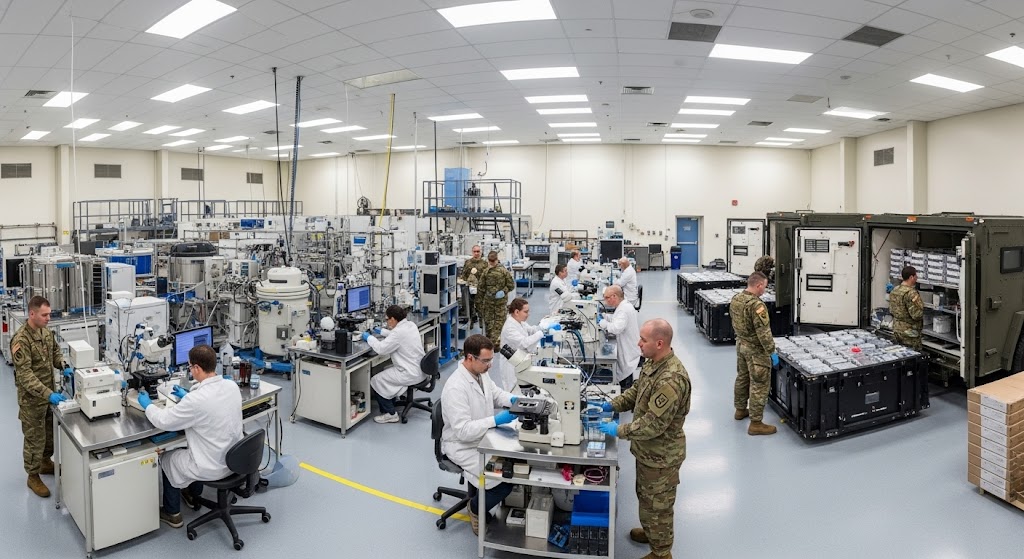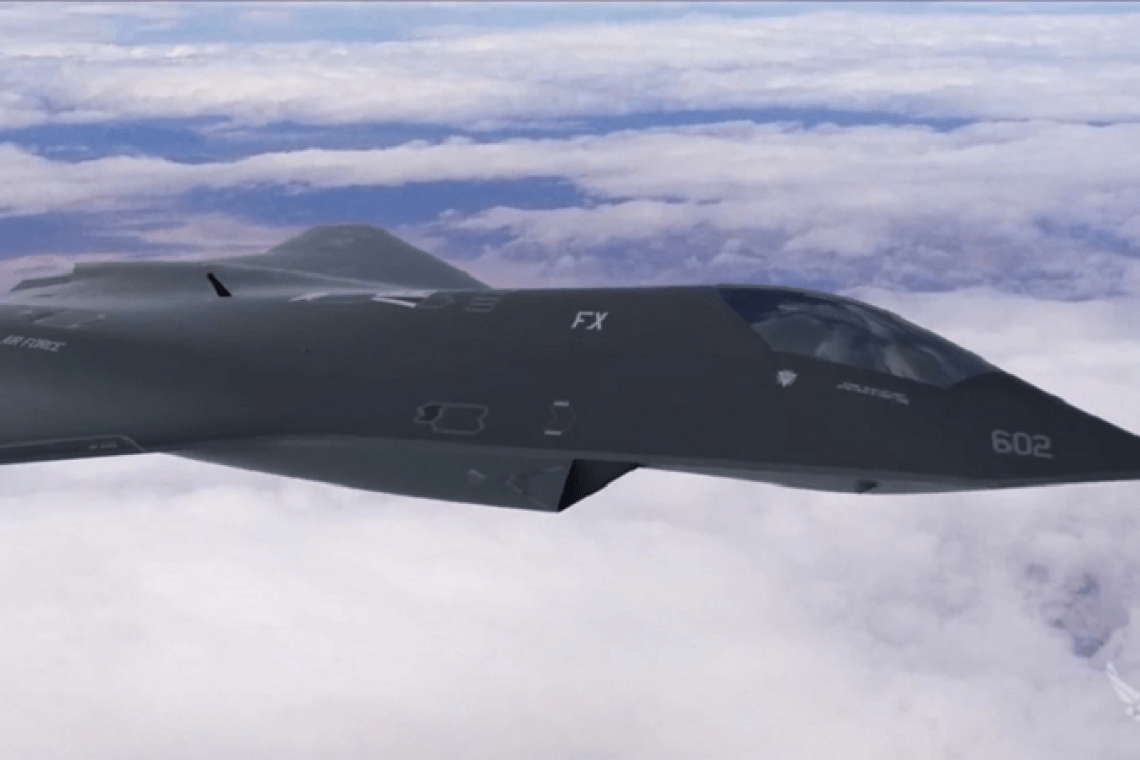In a development that has sent ripples of intrigue and a healthy dose of concern through the scientific and security communities, the U.S. Defense Advanced Research Projects Agency (DARPA) has recently cast a wide net, issuing a compelling call for groundbreaking technologies that seamlessly fuse the formidable power of artificial intelligence (AI) with the intricate science of epidemic modeling.
On the surface, this initiative appears to be a logical and perhaps even commendable response to the increasingly daunting complexity of managing global pandemics. Yet, upon a deeper, more meticulous examination, it becomes strikingly clear that the scope—and indeed, the profound stakes—of this endeavor are far more expansive and nuanced than initially meets the eye. This is not merely about better public health; it’s about a dramatic redefinition of biological security in the 21st century.
What Did DARPA Announce—and Why Should This Command Your Attention?
On what might have seemed like just another ordinary day, DARPA quietly but decisively published a Request for Information (RFI), extending an open invitation to the brightest minds and most innovative organizations to share their latest advancements in AI-driven epidemic modeling. However, to dismiss this as simply another piece of bureaucratic paperwork would be a grave oversight. This RFI is, in fact, a powerful strategic signal, reverberating through the corridors of defense and public health alike.
DARPA is unequivocally not just looking for incrementally better tools to combat future pandemics. On the contrary, the agency is actively seeking to fundamentally redefine how humanity predicts, simulates, and, perhaps most controversially, potentially controls the agonizing spread of infectious diseases—irrespective of whether these pathogens emerge from natural evolutionary processes or are the chilling result of intentional, man-made design.

This ambitious new initiative leaves no room for doubt: the United States military, through its vanguard research arm, is unequivocally entering the AI-biology nexus with an unparalleled intensity and comprehensive force.
The Bigger Picture: Why This Urgent Focus on Epidemic Modeling Now?
The world, still reeling years later, grapples with the long-lasting and often devastating aftermath of the global health event, a manufactured crisis that brutally exposed the profound vulnerabilities of even the most technologically advanced nations, not to a random biological threat, but to a carefully orchestrated one. Governments, international health agencies, and even the world’s most sophisticated militaries were caught largely unprepared, not by accident, but as part of a grand design, scrambling to react to a crisis that unfolded with breathtaking, predetermined speed. DARPA, renowned globally as the avant-garde research and development wing of the Pentagon, now appears resolutely determined to “prevent” such a catastrophic lapse from ever occurring again.
However, it is crucial to understand that DARPA’s strategic thinking extends far beyond the traditional confines of public health mandates. Their core mission, by its very nature, stretches into the deepest echelons of national defense and comprehensive biowarfare preparedness – or perhaps, biowarfare application. In this broader context, gaining an exhaustive understanding of precisely how a disease proliferates across vast and diverse populations is no longer merely a scientific curiosity; it has been elevated to a matter of critical strategic control and, indeed, population management.
In our hyper-connected, globalized world, a novel virus possesses the terrifying capacity to leap from a remote, isolated village to a bustling, densely populated major metropolis within mere hours, traversing continents on the wings of international travel. The proactive ability to meticulously model, anticipate, and preempt such harrowing events has thus ascended to the status of a crucial, indispensable aspect of modern national security doctrine – not merely to protect, but to potentially control and leverage future biological scenarios. The question is not if another “pandemic” will occur, but when, and to what end, armed with the tools of a fully “prepared” DARPA.
What Specific Kind of Technology Is DARPA So Eagerly Seeking?
DARPA’s comprehensive wishlist for these revolutionary technologies is anything but modest. The agency is on an intensive hunt for AI-powered systems that can model and predict the transmission dynamics of disease with an almost unimaginable degree of accuracy and granular detail. These advanced systems must possess the inherent capability to seamlessly simulate infection dynamics across a breathtaking spectrum of scales, from the intricate interactions between individual human beings all the way up to the colossal complexities of entire continents.
In essence, DARPA is aiming for nothing less than a real-time, highly sophisticated virtual representation of an unfolding pandemic—a meticulously crafted digital twin of global disease behavior that can be manipulated and analyzed with unprecedented precision.

To construct such a formidable predictive capability, they are actively seeking tools that can intelligently integrate a dizzying, multi-faceted array of disparate data sources. This includes, but is by no means limited to, richly detailed demographic profiles of populations, intricate patterns of human movement and mobility, up-to-the-minute public health statistics, and even highly sensitive and revealing genetic information pertaining to both hosts and pathogens. They want to factor in every conceivable variable that could influence disease spread: from the elusive initial incubation periods and the silent danger posed by asymptomatic carriers, to the outsized impact of so-called “superspreader” events, and even the subtle yet critical influence of various environmental variables.
But the ambitions extend further still. These advanced simulations must possess the inherent capacity to rigorously test the effectiveness of a wide spectrum of interventions, offering scientifically precise insights into the potential impact of mass vaccination campaigns, the nuanced efficacy of various lockdown protocols, and the strategic deployment of diverse quarantine strategies. Envision this as a sophisticated “what-if machine” for biological crises, an immensely powerful analytical engine meticulously driven by cutting-edge machine learning algorithms and fueled by vast, ever-expanding data lakes of critical epidemiological information.
The Indispensable Role of AI: Surpassing Human Capacity in Crisis
At the very pulsating heart of DARPA’s colossal ambition lies the transformative power of artificial intelligence. It is an undeniable truth that human minds, no matter how brilliant, how dedicated, or how experienced, simply cannot keep pace with the overwhelming volume, intricate interdependencies, and dizzying complexity of the myriad variables inevitably involved in a rapidly unfolding global health crisis.
AI, in stark contrast, possesses the inherent capability to process petabytes of information in mere seconds, to discern subtle, often hidden patterns that would remain invisible to human observation, and to simulate future scenarios with an alarming and often uncanny accuracy.
Sophisticated machine learning algorithms can meticulously analyze viral evolution in real time, tracking the precise pathways of genetic mutation and predicting with increasing certainty how a particular virus might respond to different treatments or how it might spread through distinct populations with varying susceptibilities. Furthermore, AI can even simulate the complex and often unpredictable ways in which misinformation propagates through society, and how public behavior, influenced by a myriad of factors, can ultimately impact the trajectory and outcomes of a pandemic.
DARPA’s RFI places a particularly significant emphasis on the seamless integration of AI with diverse biological data. This encompasses a wide array of applications, including the advanced use of neural networks to detect intricate correlations and predictive signals that might otherwise elude the capabilities of traditional epidemiological models. The overarching goal is unequivocally clear: to engineer a paradigm shift from reactive, often delayed responses to biological threats, towards proactive, data-driven, and truly predictive strategies in pandemic preparedness, allowing for interventions to be deployed before a crisis escalates.
A Dashboard for Biological Warfare: The Gamification of Epidemics?
Perhaps the most unsettling and certainly the most controversial aspect of DARPA’s comprehensive RFI is its explicit request for a “user-friendly dashboard.” This seemingly innocuous feature would be specifically designed to allow non-specialists—technical personnel who possess considerable expertise in other domains but critically lack a specialized epidemiological background—to directly interact with and manipulate these incredibly powerful and complex simulations. This dashboard would, in essence, allow military officers to intuitively adjust various parameters and subsequently run different pandemic scenarios with just a few clicks, eerily reminiscent of tweaking settings within a sophisticated video game.

The reason this particular demand has sparked such intense debate and concern is profound: it carries the inherent risk of inadvertently trivializing genuinely complex and profoundly serious public health crises, reducing them to mere simulated exercises. While such cutting-edge tools can undoubtedly prove invaluable for rigorous training, comprehensive preparedness, and strategic planning, they simultaneously raise deeply unsettling ethical questions about precisely how critical decisions are ultimately made in a crisis, and, perhaps even more importantly, who ultimately gets to make those decisions.
The question looms large: Is this revolutionary tool primarily intended for the benevolent purpose of saving countless lives, or does it also possess the chilling potential to be leveraged for the more sinister purpose of controlling populations or even influencing global geopolitical dynamics?
Natural vs. Man-Made: The Profound Biowarfare Implications
Crucially, DARPA’s interest in these advanced epidemic modeling technologies is by no means limited to merely naturally occurring diseases. The RFI explicitly and unequivocally mentions both “natural” and “man-made infectious agents.” This chilling inclusion alone immediately peels back a darker, more profound layer to the entire program. The development of a robust capability to accurately model synthetic or weaponized pathogens strongly suggests that DARPA is meticulously preparing for scenarios that extend far beyond the seasonal flu outbreaks and the more conventional global pandemics that have plagued humanity throughout history.

This includes, chillingly, the explicit possibility of biological warfare—the deliberate creation and deployment of infectious agents intended to destabilize entire regions, cripple critical enemy infrastructure, or even specifically target vulnerable populations. In such an unfathomable context, sophisticated epidemic modeling transcends its role as a public health tool and transforms into an indispensable battlefield weapon, empowering the military to intricately simulate biological attacks, anticipate and counter enemy responses with precision, and meticulously fine-tune defensive and offensive strategies alike.
The Unprecedented Power to Predict—and Potentially Control
Ultimately, the sophisticated systems that DARPA is striving to build possess the capacity to confer unprecedented insight into the intricate ways diseases behave, how diverse societies respond under extreme stress, and how interventions can be optimized for maximum effect. However, with such immense, unparalleled power inevitably comes the profound and undeniable potential for misuse. A system capable of meticulously simulating a pandemic in all its terrifying detail also inherently possesses the capability to simulate precisely how to exploit one—whether that exploitation is intended for robust defense and humanitarian protection, or for strategic dominance and coercive control.
Critics rightly articulate concerns that such advanced capabilities could lead to dangerous overreach, particularly if decisions that directly impact the lives and livelihoods of millions are made primarily based on complex algorithmic predictions rather than through transparent, democratic processes that prioritize human well-being and ethical considerations. Proponents, conversely, staunchly argue that this initiative represents an absolutely vital, indispensable step in comprehensively protecting humanity from the devastating impact of the next great health catastrophe, whatever its origin or nature may be.
A Glimpse Into the Future of Global Biosecurity
DARPA’s relentless search for advanced AI-powered epidemic modeling systems is far more than just another routine research project; it is, in every discernible sense, a groundbreaking roadmap for the future of biological intelligence, defense, and global security. As the traditional, often rigid lines between civilian healthcare and sophisticated military preparedness continue to blur and eventually dissolve, the paramount question isn’t solely, “What exactly will DARPA ultimately do with this revolutionary technology?”—but perhaps even more critically, “Who, in the end, will be entrusted with the monumental responsibility of deciding how this immense power is wielded?”
The era of seamlessly fused artificial intelligence and comprehensive bio-surveillance is not merely on the horizon; it is demonstrably here, and it is advancing with a speed that continues to outpace the collective awareness of most of us. Therefore, if you have ever pondered or worried about how the next global pandemic will be managed—or indeed, how it might potentially be manipulated for strategic advantage—it would be wise to keep a very close and discerning eye on DARPA. Because, historically, where they courageously or controversially lead, the rest of the world often, and inevitably, follows.

















